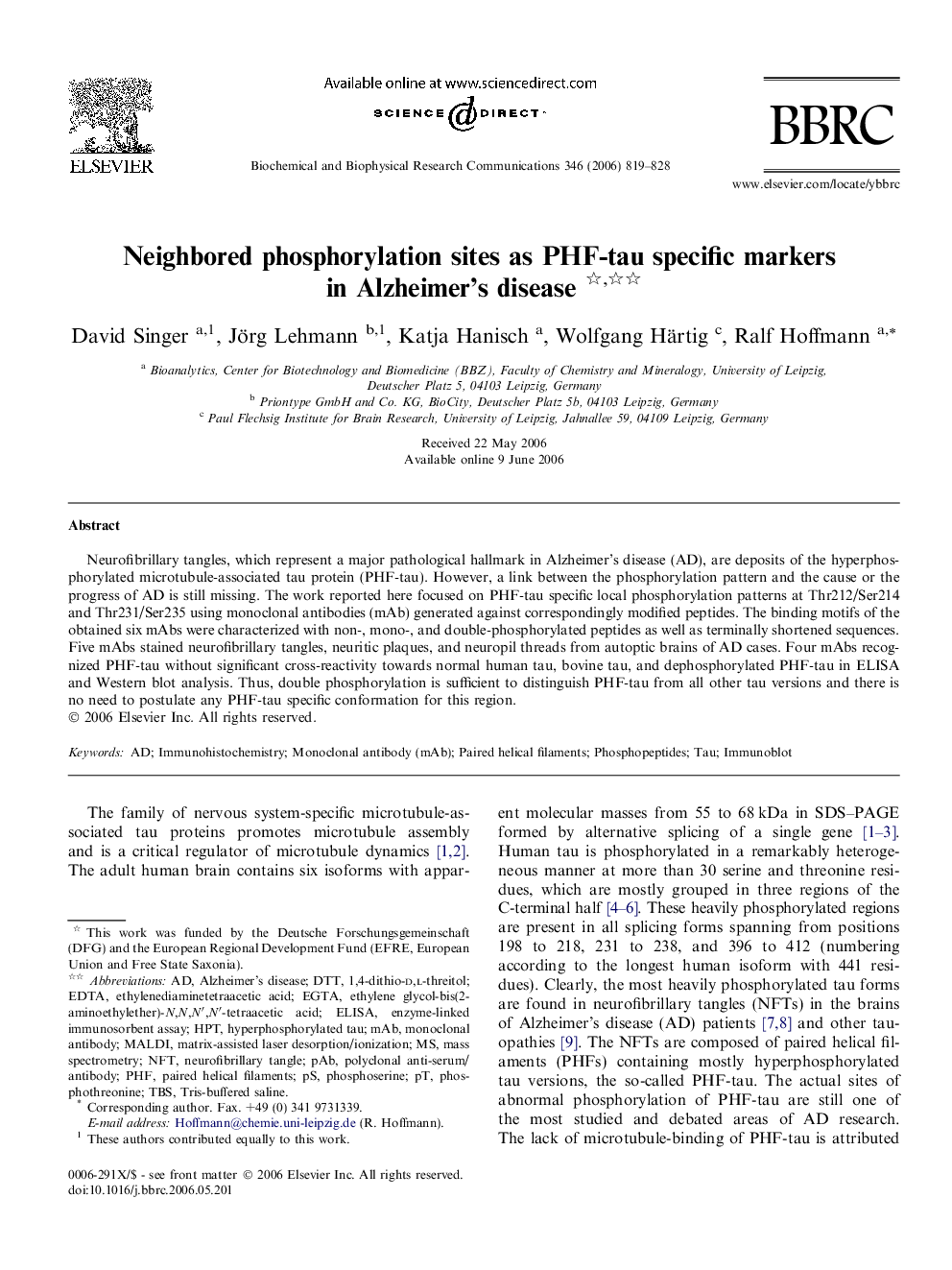| Article ID | Journal | Published Year | Pages | File Type |
|---|---|---|---|---|
| 1939461 | Biochemical and Biophysical Research Communications | 2006 | 10 Pages |
Neurofibrillary tangles, which represent a major pathological hallmark in Alzheimer’s disease (AD), are deposits of the hyperphosphorylated microtubule-associated tau protein (PHF-tau). However, a link between the phosphorylation pattern and the cause or the progress of AD is still missing. The work reported here focused on PHF-tau specific local phosphorylation patterns at Thr212/Ser214 and Thr231/Ser235 using monoclonal antibodies (mAb) generated against correspondingly modified peptides. The binding motifs of the obtained six mAbs were characterized with non-, mono-, and double-phosphorylated peptides as well as terminally shortened sequences. Five mAbs stained neurofibrillary tangles, neuritic plaques, and neuropil threads from autoptic brains of AD cases. Four mAbs recognized PHF-tau without significant cross-reactivity towards normal human tau, bovine tau, and dephosphorylated PHF-tau in ELISA and Western blot analysis. Thus, double phosphorylation is sufficient to distinguish PHF-tau from all other tau versions and there is no need to postulate any PHF-tau specific conformation for this region.
